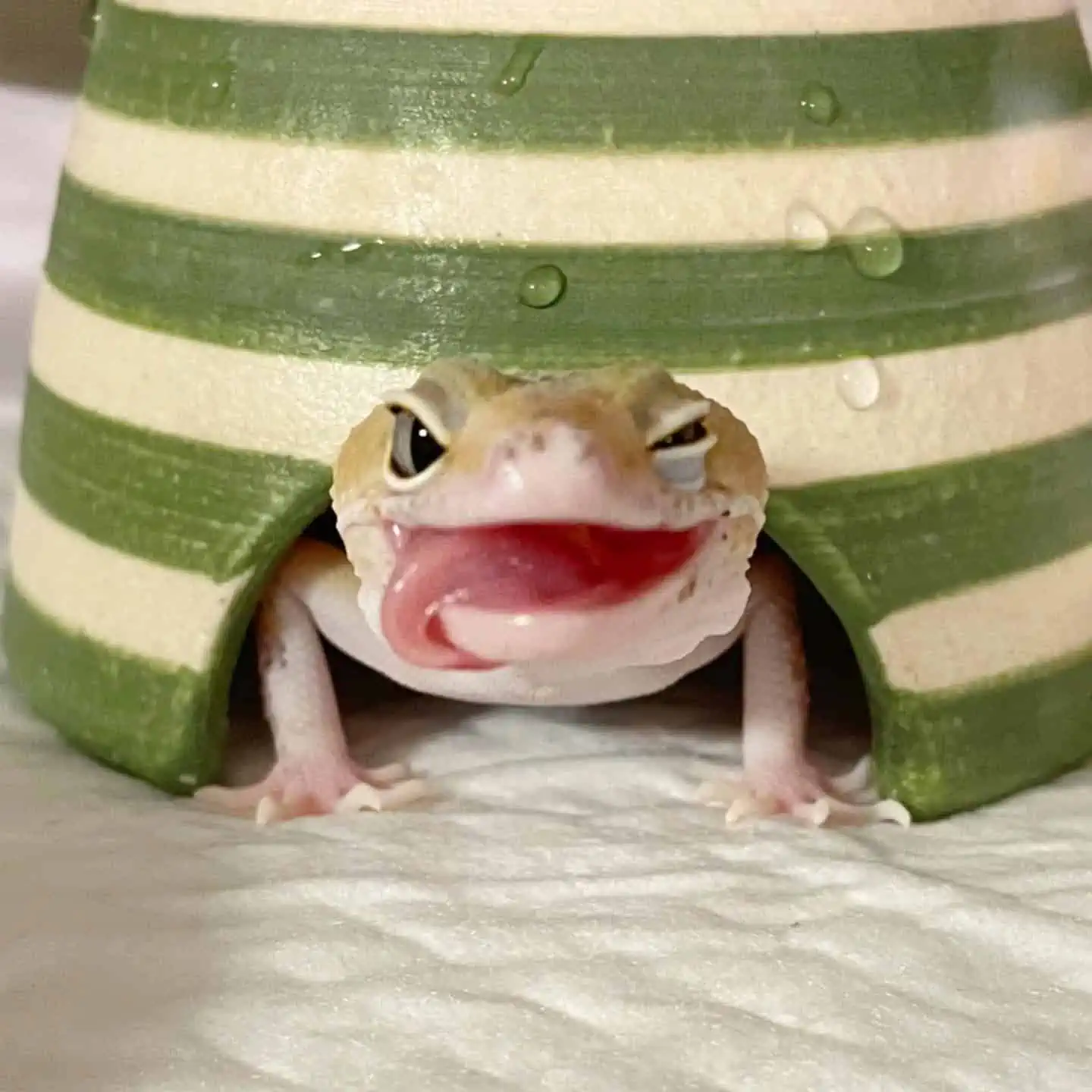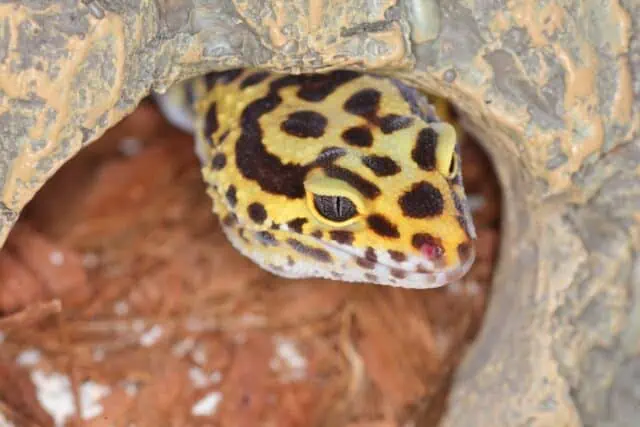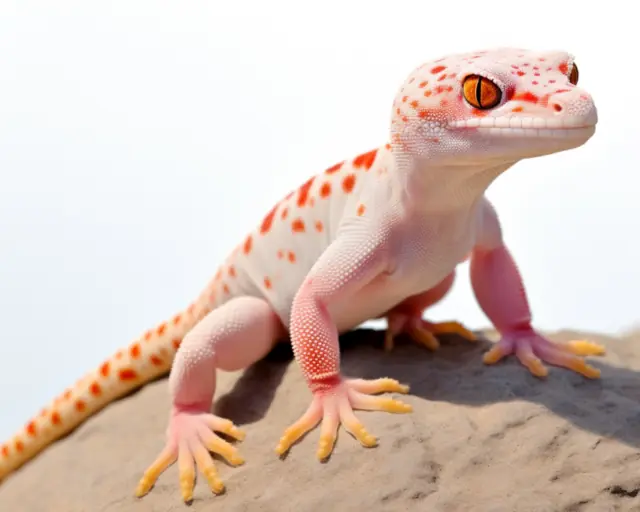Leopard Geckos have garnered immense popularity in the reptile world, and it’s easy to see why. With their captivating spotted patterns, gentle demeanor, and mesmerizing eyes, they stand out as one of the most unique and intriguing reptilian pets. But diving into the world of Leopard Gecko adoption is more than just an aesthetic choice.
It’s about understanding their needs, their habits, and ensuring they get the life they deserve in their new home. This article delves deep into everything you need to know about these beautiful creatures when you’re looking to adopt one.
Leopard Gecko Pre-Adoption Considerations
Taking the plunge into the world of Leopard Gecko adoption is a thrilling prospect. However, it’s not as simple as making a snap decision and immediately enjoying your new scaly friend’s company. Bringing one of these fascinating creatures into your life comes with responsibilities and demands careful planning. In this section, we’ll discuss crucial factors you should consider before finalizing your decision to adopt. Think of it as a roadmap, guiding you through the essential steps and considerations, ensuring that when you finally make the commitment, both you and your prospective gecko are set for a fulfilling journey together.
Essential Equipment and Set-Up
Creating a comfortable and safe environment for your Leopard Gecko is pivotal. Imagine it as setting up their own miniature world, mimicking the deserts and rocky terrains they’re so accustomed to. This setup is not just about aesthetics; it’s crucial for their well-being and longevity. Here, we’ll dive into the nitty-gritty of the essential equipment and how to set up their perfect abode.
At the heart of the setup is the terrarium. The size of the enclosure matters; for a single adult Leopard Gecko, a 20-gallon tank is generally recommended. This provides ample space for them to roam, explore, and establish distinct zones within their environment.
Next up is heating. Remember, Leopard Geckos hail from desert regions, and they thrive in a gradient of warmth. Heating mats are an excellent solution, placed under one side of the tank. This setup creates a warm side for basking and a cooler side for resting. Regularly monitoring temperatures with a reliable thermometer is essential to ensure they’re in the optimal range.
One of the more endearing traits of Leopard Geckos is their love for hiding. Thus, hides are non-negotiable in their habitat. These serve multiple purposes – from providing a sense of security to acting as a cool retreat during the day or a cozy space for shedding.
Substrate choice is another significant consideration. While sand might seem like a natural choice given their desert origins, it poses ingestion risks. Instead, options like reptile carpet, paper towels, or slate tiles are safer and easier to maintain.
Don’t forget the smaller details: a water dish for hydration, calcium dish for nutrition, and a humid hide to aid in the shedding process.
Diet and Nutrition
No aspect of pet care is complete without addressing the dietary needs of the creature in question. For Leopard Geckos, their diet is a crucial component of their health, growth, and overall vitality. Let’s delve into the world of what makes a meal for these captivating reptiles and how best to ensure they get the nutrition they deserve.
Leopard Geckos are insectivores. This means their primary food source is insects. Common choices include mealworms, crickets, and waxworms. Each of these critters offers its own nutritional benefits. Crickets, for instance, are high in protein, while mealworms offer a good fat source. However, it’s essential to maintain variety in their diet. Regularly rotating between different insects can help ensure a balanced intake of nutrients.
But feeding them insects is only part of the equation. These insects must be ‘gut-loaded’. This essentially means feeding the insects a nutritious diet before they become food for the gecko. It’s a way of enhancing the nutrient content of the insects, ensuring the gecko gets the most nutritional bang for its bite.
Additionally, supplements play a pivotal role in the gecko diet. Calcium and vitamins, for instance, are a must. A small dish of calcium should always be available in the gecko’s enclosure. Additionally, dusting the insects with calcium and vitamin supplements a few times a week can help meet their nutrition necessities.
As for feeding frequency, baby geckos require daily feeding due to their rapid growth, while adults thrive on a schedule of feeding every other day. Always ensure the insects are appropriately sized – generally, they shouldn’t be larger than the space between the gecko’s eyes.
Vet and Health Preparations
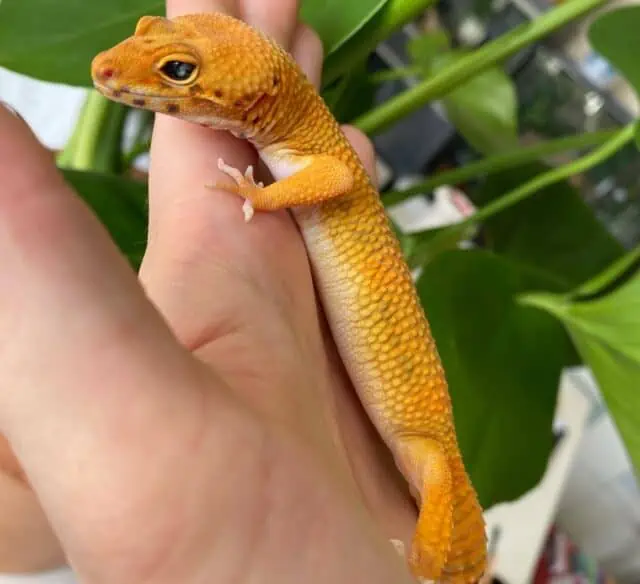
Caring for a Leopard Gecko goes beyond just feeding and habitat setup; it extends into the realm of healthcare. Given their unique physiology and potential health challenges, preparation in this arena is not just advisable—it’s indispensable. Here’s a primer on what you should know and how you can gear up to keep your Leopard Gecko in peak health.
One of the first and foremost tasks on your checklist should be finding a reputable reptile vet. Not every veterinarian has expertise in reptiles, let alone specific knowledge about Leopard Geckos. Establishing a relationship with a vet who understands the intricacies of gecko health is paramount. Regular check-ups, especially in the first few months of adoption, can ensure that any potential issues are nipped in the bud.
Speaking of health issues, while Leopard Geckos are generally robust, they aren’t immune to certain ailments. Metabolic bone disease, for instance, is a common concern, often resulting from a calcium or vitamin D3 deficiency. This ailment affects the gecko’s bone health, leading to fractures or deformities. Proper diet and supplementation, as discussed earlier, play a preventive role.
Then there are shed-related problems. Like other reptiles, Leopard Geckos shed their skin. However, at times, complications can arise. If the humidity level in their habitat isn’t optimal or if they have health issues, they might face difficulties in shedding entirely. Remnants of skin, especially around delicate areas like the eyes or toes, can pose problems. Regular monitoring during their shedding phase and ensuring a moist hide in their enclosure can mitigate such concerns.
While these are just a couple of examples, they underscore the importance of being proactive about your gecko’s health. Knowledge, they say, is power. Being informed about potential health issues and having a plan in place, whether it’s regular vet check-ups or an emergency kit tailored for reptiles, ensures that you’re not caught off-guard.
The Adoption Process of a Leopard Gecko
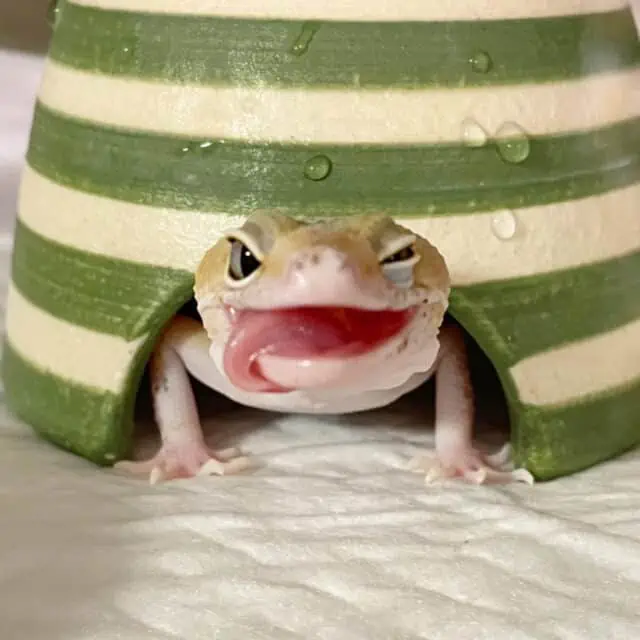
Entering the world of Leopard Gecko adoption is much like embarking on an adventure. The anticipation, the excitement, and the promise of a new bond are undeniably thrilling. However, this process is punctuated with crucial decisions, especially concerning where and how to adopt. This section aims to illuminate the path for you, ensuring that you make informed choices, all while keeping the best interests of the Leopard Gecko at the forefront.
A critical starting point in the Leopard gecko adoption journey is deciding where to adopt from. Various avenues exist, each with its own pros and cons.
Rescue centers are an altruistic option. Many Leopard Geckos, for various reasons, end up in rescue facilities, awaiting a second shot at a loving home. Adopting from such centers not only provides a home to a gecko in need but also often comes with the advantage of adopting a gecko whose health and temperament are already assessed. The adoption fees from these centers typically go towards supporting their rescue and care initiatives.
We recommend places like ReptileRescueCenter.org or HerpHaven.org, if you’re looking to adopt a Leopard Gecko that’s in need of a new home.
On the other hand, breeders offer the allure of specificity. If you’re particular about the age, color morph, or even the lineage of your Leopard Gecko, breeders might be the route for you. However, it’s paramount to ensure that you’re dealing with responsible breeders. Signs of a reputable breeder include transparency about their breeding practices, willingness to provide care guidance, and evidence of healthy living conditions for their geckos.
Lastly, pet stores are a convenient option if you’re looking for a simple purchase of a leopard gecko, given their accessibility and the variety they often offer. Yet, caution is advised. While many pet stores adhere to commendable care standards, not all are created equal. It’s essential to research and opt for stores known for their ethical practices.
Beyond the source, it’s also vital to be informed about potential adoption fees, which can vary based on the source and the specific Leopard Gecko variant.
Post-Adoption Care and Tips
So, your new scaly companion has finally made its way home! This marks the beginning of an exciting chapter filled with interactions, bonding, and countless memories. But as the initial thrill subsides, the real journey commences. Proper post-adoption care is instrumental in ensuring that your Leopard Gecko not only adapts but thrives in its new environment.
Settling Them In
The first few days of a Leopard Gecko in a new environment are a delicate dance of curiosity, caution, and acclimation. While these reptiles are generally resilient, the initial transition is a crucial time. It’s akin to you moving into a new home – everything feels unfamiliar, and there’s a natural instinct to explore, yet with a tinge of hesitation. Here’s how you can ensure that this transition is smooth for your scaly companion:
Terrarium Placement: It’s not just about having the perfect terrarium, but also where you place it. A quiet spot, away from direct sunlight or high traffic areas in your home, can help reduce stress. The idea is to offer your gecko a sense of safety and allow it to familiarize itself with the surroundings at its own pace.
The First Feed: It’s common for Leopard Geckos to skip their first meal in a new environment. The unfamiliarity can often overshadow their appetite. Instead of being overly persistent, give them time. Make sure to offer food, but don’t be disheartened if they don’t take it immediately. Their appetite will return as they get comfortable.
Avoid Handling Initially: As much as you might be tempted to pick up and bond with your gecko, restraint is advised during the initial days. Excessive handling can exacerbate their stress. Let them come to terms with their new home. Once they seem active and curious, you can gradually introduce short handling sessions.
Observe for Signs of Acclimation: Every gecko is unique. Some might take a few hours to start exploring, while others might need a couple of days. Observing their behavior can give you insights. Active exploration, a return of appetite, and a general sense of alertness are positive signs of gecko acclimation.
Incorporate patience into your first-day care routine. Understand that moving can be overwhelming, and the best gift you can give your gecko at this stage is time. It’s essential to ensure that the introduction to their new environment is as stress-free as possible.
Ongoing Care Routine
A thriving Leopard Gecko is often a direct reflection of a consistent and well-thought-out care routine, but this will come with certain ongoing costs. While these creatures may not demand constant attention like some other pets, a regular, dedicated regimen ensures they remain healthy and content. Let’s delve into the daily, weekly, and monthly tasks that will become second nature to you as a responsible gecko parent:
Daily Feeding: Just like us, Leopard Geckos benefit from a regular feeding schedule. Young geckos typically need to eat every day, while adults can be fed every other day. Pay attention to their appetite and adjust feeding times as necessary. Remember, consistency in feeding times aids in digestion and overall well-being.
Regular Cleaning: An unclean habitat is a breeding ground for diseases. Spot-clean the terrarium daily by removing uneaten food and feces. Every few weeks, a deeper clean with a mild reptile-safe disinfectant is recommended. Equip yourself with essential cleaning equipment like brushes, scoops, and wipes to ensure a thorough job.
Safe Handling: Handling is an essential aspect of your bond with your gecko and their socialization. However, it should be approached with caution and patience. Make it a routine to handle your gecko a few times a week, but limit sessions to prevent stress. Always wash your hands before and after, ensuring the safety of both you and your gecko.
Habitat Monitoring: Ensure you monitor the temperature, humidity, and general condition of the terrarium daily. Adjustments to heating or moisture levels may be needed depending on external conditions. Investing in reliable thermometers and hygrometers can make this task efficient.
Regular Health Checks: While you interact with your gecko, take a moment to observe them. Look out for any changes in behavior, eating habits, or physical appearance. Swiftly addressing potential health concerns can be crucial.
Common Mistakes in Leopard Gecko Care
Every new journey comes with its set of learning curves. Caring for a Leopard Gecko is no different. While these resilient reptiles often adapt to various conditions, certain mistakes, if recurrent, can adversely affect their health and happiness. By highlighting common misconceptions and errors, the hope is to prevent them, ensuring your gecko lives its best life. So, let’s uncover some frequent issues faced by owners, both new and seasoned:
Incorrect Terrarium Setup: The heart of a gecko’s environment is its terrarium. However, many first-time owners might opt for a setup more fitting for tropical reptiles, not understanding the desert origins of the Leopard Gecko. This mistake can lead to excessive humidity, promoting fungal growth. Always ensure you have a dry substrate, adequate heating, and minimal moisture.
Improper Diet: A balanced diet is pivotal for a Leopard Gecko’s health. Feeding them only one type of insect or neglecting to provide calcium and vitamin supplements can lead to nutrient deficiencies. It’s essential to offer a varied diet and ensure they’re getting the necessary nutrients.
Overhandling: While Leopard Geckos are among the more sociable reptiles, overhandling, especially during the initial days, can stress them. It’s essential to strike a balance and understand their comfort levels.
Neglecting Regular Health Checks: Some owners might mistake a Leopard Gecko’s resilience for invulnerability. Regular health checks are essential to detect potential issues early on.
Falling for Myths: There’s a plethora of information online, and not all of it is accurate. Myths like “Leopard Geckos don’t need UVB lighting” or “They can live solely on mealworms” can be harmful if believed. Always ensure you’re getting your information from reputable sources.
Inadequate Shedding Assistance: Leopard Geckos, like other reptiles, shed their skin. However, improper humidity levels or terrarium conditions can lead to problematic sheds. Owners must monitor their geckos during this time and provide assistance if needed, like a moist hide or gentle aid in removing stuck shed.
Conclusion
Adopting a Leopard Gecko is not just a decision; it’s a commitment to a beautiful journey that’s paved with mutual respect, understanding, and affection. These captivating creatures, with their mesmerizing patterns and gentle demeanor, have a unique way of weaving themselves into the hearts of those who care for them. But, like all relationships, this too requires effort, knowledge, and dedication.
The rewards of owning a Leopard Gecko are manifold. Their quirky behaviors, the intricate dance of their nocturnal routines, and the sheer joy of watching them thrive can bring unparalleled contentment. Yet, this joy is maximized when it’s rooted in well-informed care. As with many things in life, the depth of our understanding directly impacts the quality of our experiences. With Leopard Geckos, this couldn’t be truer.
The bond between you and your gecko will be forged through countless moments: from the first time they recognize your presence to the days they comfortably rest in your hands. Each of these moments is a testament to the love and care you’ve invested.
FAQ
What’s the average lifespan of a Leopard Gecko in captivity?
Leopard Geckos are known for their longevity, especially when compared to other reptiles. In a well-maintained captive environment, they can live anywhere from 10 to 20 years, with some even reaching the age of 25 with exceptional care.
How often should I feed my Leopard Gecko?
Young Leopard Geckos should be fed daily since they are in a growth phase. However, as they mature, feeding every other day is sufficient. Always monitor your gecko’s appetite and adjust the feeding schedule if you notice any significant changes.
Do Leopard Geckos need companionship, or can they live alone?
Leopard Geckos are solitary creatures by nature. They don’t necessarily require the company of other geckos and, in some cases, can become territorial if housed with others. It’s often best to keep them individually to prevent potential conflicts or stress.
How do I know if my Leopard Gecko is healthy?
A healthy Leopard Gecko will have clear eyes, a robust appetite, and an active demeanor, especially during their active nocturnal hours. Regular shedding, a full tail, and alertness to their surroundings are also good indicators. Signs of ill health might include lethargy, lack of appetite, irregular shedding, or physical abnormalities.
Are Leopard Geckos suitable for beginners?
Yes, Leopard Geckos are often recommended for those new to reptile care due to their manageable size, hardy nature, and generally docile temperament. However, like with any pet, prospective owners should do thorough research and be prepared for the responsibilities that come with their care.

